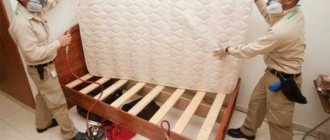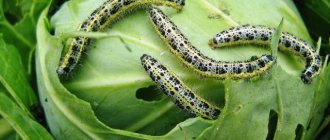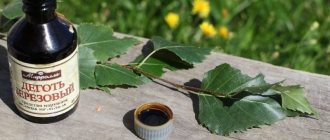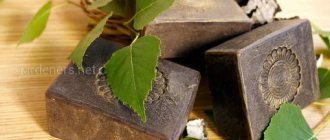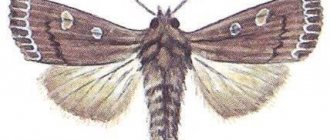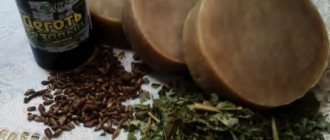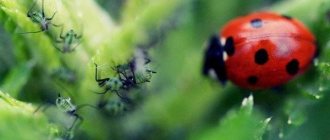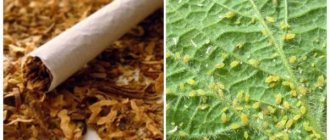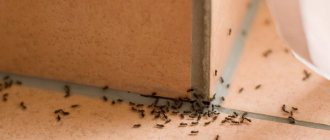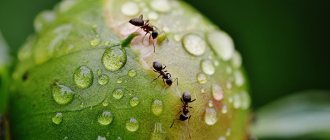Irregularly shaped holes in the leaves and fruits of plants almost completely signal to the summer resident about the invasion of uninvited mollusks on the site, which will be oh so difficult to get rid of using folk methods! But let's talk about everything in order.
If on your site there are accumulations of plant debris, decking, greenhouses, tall grass or constant dense shade, and even rain in warm weather - rest assured, the mollusks are already right there. Which means expect trouble.
Description and life cycle
Slug
Slugs are gastropods without shells. The body has a roll-like shape and is conventionally divided into head, torso and leg. The leg is the lower, muscular part of the body, shaped like a flat sole. There are two pairs of tentacles on the head, with eyes at the end of the longer tentacles. The body is covered with soft, mucous skin; mucus is produced by the skin glands and serves to protect against drying out and the effects of various foreign substances, including chemicals.
Snail
In snails , the body covers produce a spirally twisted shell. At the top the shell is blindly closed, at the other end there is a hole - the mouth. The diameter of the shell whorls increases with the growth of the animal from the apex to the mouth. In case of danger, the animal completely retracts its body into the shell.
The oral organs of slugs and snails of the gnawing type are represented by a horny jaw in the form of a bracket with a tongue covered with teeth - a “grater”. The tongue is a muscular roll, covered with a thin cuticle and bearing hard teeth arranged in transverse rows.
Mollusks are hermaphroditic animals; fertilization is internal and cross-fertilization. They lay up to 400 eggs in groups in various natural shelters - under lumps of soil, at the base of plants, especially in places where weeds grow, under film, boards.
The presence of weeds and debris on the site creates favorable conditions for their reproduction. Development is direct. Young slugs and snails are similar to adults, but are smaller in size. The animals are moisture-loving and reproduce in large numbers when there is excess moisture, so they are numerous in rainy summers. In hot, dry weather, adults burrow deep into the soil, and young individuals and eggs die. Crepuscular animals, feed late in the evening or at night; During the day they are found under lumps of soil and various shelters, but in cloudy weather they can be found on plants during the day. The eggs mainly overwinter under lumps of soil. In the spring, young individuals hatch and reach sexual maturity within 2–3 months.
Reproduction and lifespan
Slugs are natural hermaphrodites. They can reproduce either sequentially or crosswise. Left alone, an individual fertilizes itself, and this ability persists for several more generations. In nature, they can change sex depending on the partner.
During the mating season, they find a couple by mucus, following it like a path. When meeting, individuals release their genitals and often intertwine them so that afterward they have to be bitten off. Some species throw droplets of sperm at each other without touching. Tree slugs perform this ritual in the air, suspending themselves on a string of mucus.
Pairing
After a few days, laying occurs. Slug eggs look like small pearl eggs. Usually there are from 20 to 100 of them in one nest, which is located under the leaves or in the ground. The incubation period depends on the species and climatic conditions. Most often it lasts 3–5 weeks.
Young animals do not hatch from autumn clutches until warm days begin. In a critical situation, babies can be born in two years. Newborn slugs are fully formed and, thanks to their extraordinary gluttony, grow quickly. After just a couple of months, they become sexually mature and are ready to give birth to offspring themselves.
The lifespan of the imago depends on the species. Some die in the fall, while others live for about 6 years.
Kinds
Slugs and snails are divided into three families. The largest representatives of slugs belong to the family Limacidae , the length of the body when extended is 40–200 mm. This family includes the fawn or arable slug, reticulated slug, agile slug, and large slug .
Slugs of the Arionidae family
In slugs of the family Arionidae
body length in the straightened state is 20–70 mm.
This includes the following representatives: bordered slug, brown slug, garden slug .
Family helicidae or snails
Family Helicidae
or snails.
The body of animals in the straightened state has a length of 60–80 mm, and is covered on top with a spirally twisted shell. The shape and color of the shell varies among different species. Before wintering, the outer opening of the shell (mouth) is closed with a lid consisting of two layers. The outer layer is calcareous, the inner layer is made of hardened mucus. The sink may also close when hot, dry weather sets in. This family includes the following representatives: grape snail, garden snail .
Slugs in the house through the eyes of an etymologist: who they are, what they look like
Slug is the common name for a group of gastropods.
Slugs differ from shell-bearing gastropods by the complete absence of a shell, an external skeletal formation.
Most representatives of the group of terrestrial slugs are classified by etymologists as pulmonate snails and are classified as a separate ecological form.
It is assumed that the loss of the shell occurred as a result of a change in residence of gastropods - during migration to land, while living among aquatic plants.
There is a version that the transformation of slugs occurred due to a deficiency of calcium necessary for shell formation in the regions where the mollusks live.
What do slugs look like? The body of a land slug resembles the body of all mollusks and consists of three sections: the visceral mass, the head, and the legs.
The body is elongated and changes shape when muscles contract. It is distinguished by bilateral symmetry, which is broken only by the unpaired pulmonary opening.
The name slugs was earned due to the large amount of secretion (mucus), which protects the shell of the mollusk from drying out, facilitating its rapid movement as a result of sliding, to scare off natural enemies. And also:
- the size of slugs varies from 3 mm to 30 cm;
- the color can be light gray, light brown, but more often the color is spotted;
- Small varieties settle in the house - from 5 mm to 10 cm.
Contractile tentacles are located on the head of slugs (up to two pairs). It is on the tentacles that all the sense organs of these creatures are located - eyes, organs of tactile perception.
Around the head there are sensory receptors - nerve nodes that process information received through the tentacles.
These receptors are the organs of smell, touch, taste, the lower pair is the organ of vision.
The mouth is located in the front of the head, equipped with sharp chitinous jaws capable of biting food, and a tongue adapted for grinding pieces of prey.
Many slugs have shell rudiments that have lost their original characteristics, but serve as a reservoir for the accumulation of calcium salts.
Land slugs are hermaphrodites with cross-fertilization.
One individual lays up to 30 eggs and reproduces once a year.
Not all types of mollusks overwinter: life expectancy is limited to the warm period of the year. Wintering species are also found in temperate climates.
What do slugs eat in the house? The strange creatures are omnivores and feed on organic matter - plant leaves, moss, berries, fruits, potato tubers, etc., and are sometimes classified as pests. Some groups are predators, hunting their own kind, earthworms.
Damage caused
Damage caused by snails
Snails and slugs are polyphagous pests that damage all vegetable crops, but prefer cabbage, cucumber, lettuce, peppers, eggplant, radishes, and parsley. They eat seeds and sprouts, the growth point of young plants, seedlings, grape leaves, strawberries, carrot roots, while eating irregularly shaped holes in the succulent plant tissues.
They can damage various parts of ornamental plants, eat flowers of various plant species, and bulbs of gladiolus. Dahlias, hostas, lupins and delphiniums suffer the most. The harmfulness increases sharply in rainy or cloudy weather. They are found in closed ground, where they penetrate due to poor insulation of premises or as a result of drift with containers or with the substrate. Various types of cultivated plants are also damaged there.
Slugs and snails are detected as follows. On the leaves, in the process of feeding and moving, they leave characteristic traces of dried silver mucus, by which it is easy to distinguish the damage caused by them from damage caused by caterpillars or beetles.
Natural enemies of slugs
Nature has created enough enemies for these unpleasant creatures to regulate their numbers.
Natural enemy
Among those who enjoy eating slugs are:
- The ground beetle is a real nightmare for gastropods. In one day, one beetle can destroy up to ten individuals.
- The hedgehog comes to the aid of many dacha owners. He hunts precisely at the time when pests are most active.
- Toads, frogs, lizards and grasshoppers are not averse to snacking on these creatures.
- Birds. In the wild, magpies, crows, rooks, and thrushes eat slugs, but they are unlikely to become good helpers for humans in controlling pests in their summer cottages, since the birds themselves damage the harvest. Chickens, geese, and turkeys also do not refuse to feast on land mollusks.
How to get rid of slugs and snails
Nothing works to permanently get rid of these pests, so focus your efforts on protecting your most valuable plants and reducing slug and snail populations. Try the following methods and remedies.
- The main measure for exterminating slugs and snails is weed control and clearing the area of boards, boxes, old film and debris. These are the main places of accumulation and breeding of slugs.
- The first spring field work disturbs the slugs, and they come out to the site at night. Place bait on the ground: mix canned cat food with bran. You can walk around in the dark with a flashlight and collect slugs from the traps.
- In small areas, it is practiced to catch slugs under shelters that are placed on the soil surface. Large plant leaves, boards, opaque film, slate, etc. can serve as shelter. It is advisable to moisten the soil under the shelters. Once a day, the shelter must be raised and slugs collected from there, followed by their destruction. Collect pests after dark on damp nights and be sure to burn them. If you just throw them over the fence, they will come back.
- In greenhouses and in individual areas, paths can be sprinkled with iron sulfate (10 g/mg), superphosphate (5–8 g/mg), and tobacco dust. If the number of slugs is high, you can pollinate the soil under the plants with superphosphate (30–40 g/mg), slaked lime (30 g/mg), a mixture of lime and tobacco (20–25 g/mg), sprinkle with a solution of potassium salt - 1 kg per 10 l water. Treatment should be done late in the evening, when the slugs crawl out of their shelters.
- Among chemical agents, there is the drug Groza G (60 g/kg). Granules of the drug are scattered on the surface of the soil between rows and paths at a rate of 30 g per 10 sq.m.
- The use of physical barriers makes sense for plants grown in pots and raised beds.
- You can sprinkle the soil around the plants with sharp-edged gravel or surround them with copper tape, which gives a mild shock.
- Granules made from absorbents based on aluminum sulfate (less harmful to the environment) and iron phosphate (more effective) are widely used. Use metaldehyde granules in small quantities. Scatter them under an overturned flower pot or along gutters so that birds and your pets cannot access them. Collect and destroy dead slugs daily.
- Autumn control of slugs can be considered plowing after the first frost. This is how their eggs are destroyed.
- Slugs are readily eaten by gray toads, which often settle in garden plots.
You will learn more about how to deal with slugs and snails on your property in the video.
Ways to fight
You can get rid of slugs in your garden using both pesticides and more humane methods.
- Chemical preparations are recommended for use in highly contaminated areas. It must be borne in mind that insecticides will not help, since mollusks are not insects. You'll have to spend money on special tools. “Predator”, “Anti-slug”, “Thunderstorm”, “Slug-eater” help well.
- If you plant plants around the perimeter and inside the area whose smell cannot be tolerated by pests, then you don’t have to worry about their invasion. Onions, garlic, marigolds, basil, mustard, and creeping clover have such abilities.
- Purchased and homemade traps will help reduce the number of individuals. To do this, pour beer or kefir into a jar and cover it with earth. There should be enough liquid to drown the pest.
- Collecting shellfish by hand at dawn is an ineffective but least expensive method. It can give results if there are few slugs.
- Folk remedies take advantage of the vulnerability of gastropods. Apply slaked lime and copper sulfate, applying them along the perimeter of the site.
- Agrotechnical practices are aimed at creating unfavorable conditions for the life of pests. They include draining the area, timely weeding, and removing debris.
Features of character and lifestyle
Photo: Blue Slug
Slugs are adapted to life on land and in the sea. They play an important role in natural ecosystems, removing dead, decaying plant matter and serving as an important source of food for various animal species. In many areas, slugs are classified as pests because they can cause serious damage to garden plants and crops.
Mucus is an unusual compound, neither liquid nor solid. It solidifies when the slug is at rest, but liquefies when pressure is applied—in other words, when the slug begins to move. The slug uses chemicals in the mucus to find its way home (the mucus trail makes navigation easier). Dried mucus leaves a silvery mark. The slug avoids hot weather because it easily loses water from its body. It is mainly active in spring and autumn.
Slugs travel on many surfaces, including rocks, dirt and wood, but they prefer to stay and travel in damp areas for their protection. The mucus produced by slugs helps them move up vertical areas and maintain balance. The movement of slugs is slow and gradual as they work their muscles in different areas and continually produce mucus.
Preventing slugs
Please note that limiting the spread of slugs is a labor-intensive process that must be carried out every year. There are many preventative measures, the regular implementation of which will help limit the spread of the Spanish slug - this includes regular mowing of roadsides, ditches, and grassy areas near slug habitats.
It is advisable to remove the mown grass so that slugs do not have the opportunity to hide. Given that slugs are also attracted to compost, it is recommended to use closed compost bins that do not allow slugs to enter or move around.
